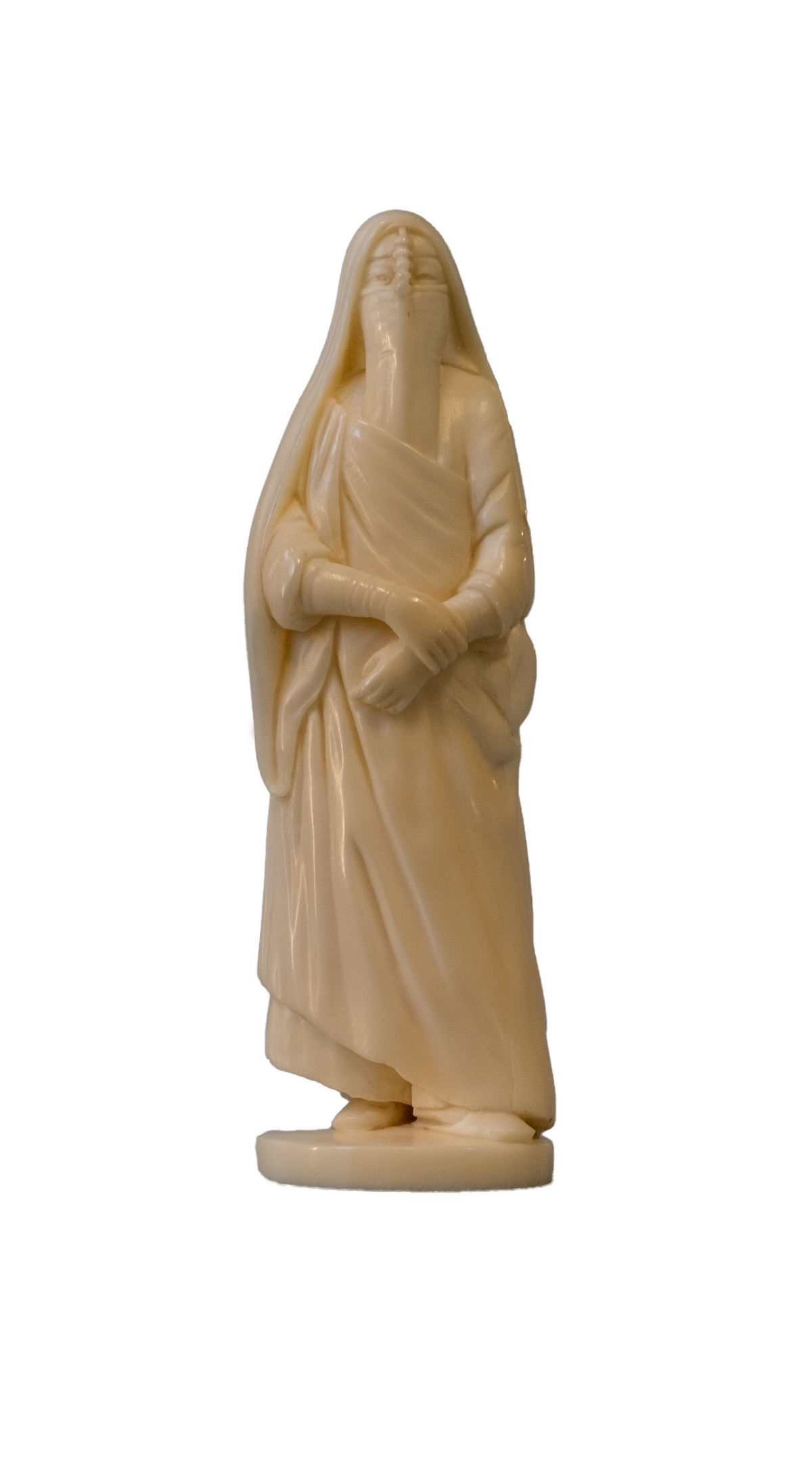Okimono in shape of an Egyptian

Okimono, Japan, Meiji-Period, late 19th century, Ivory.
Courtesy of Johann Jacobs Museum
Netsuke belong to the finest of Japanese carving art. The small “buttons” were used to attach pouches and pipes to the belt of the kimono. In the Meiji period, the traditional garment went out of fashion. Men were required to wear suits in public.
After netsuke largely lost their function, carving artists began to look for other outlets. This ivory okimono is reminiscent of a Christian Madonna figure. However, the veil and bead make it clear that this is a fellachin, an Egyptian peasant woman. The “fellachin” was an Orientalist motif of the time. It circulated, for example, in photographs taken by the Cairo photo studio Lehnert&Landrock. There were however no real peasant women sitting as models in Cairo, but prostitutes or actresses dressed as peasant wome